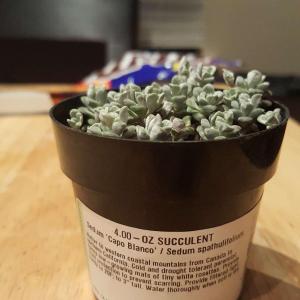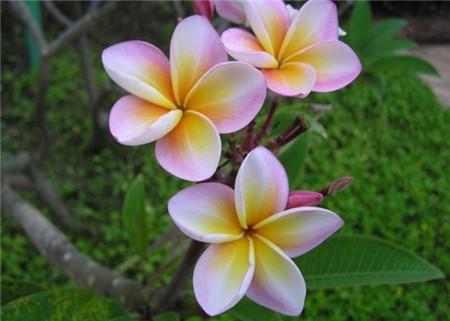文章
笼岛 みどり
2017年05月22日


7月28日の誕生花
7月28日の誕生花は、「オシロイバナ」です。
オシロイバナ科の一年草・多年草で原産は南アメリカです。7~10月に、枝先に白やピンク、黄色などの小ぶりの花を咲かせます。花自体は一夜限りの短命なものですが、毎日新しい花を次から次へと咲かせ黒い種をつけていきます。
オシロイバナについて科・属 オシロイバナ科オシロイバナ属英名 Marvel of Peru, Four o’clock学名 Mirabilis jalapa原産地 南アメリカ開花時期 7月~10月
オシロイバナの花言葉と由来
オシロイバナの花言葉は、「恋を疑う」「臆病」「内気」「柔和」「小心」「あなたを思う」。
花の名前の由来は、黒い種の中におしろいに似ている白い胚が入っていて、押しつぶすとおしろい状のしっとりした白い胚乳があらわれることから名付けられました。また、午後4時くらいから香りを放つ花を咲かせることから、「夕化粧(ユウゲショウ)」という別名を持ちます。
英名では「ペルーの不思議(Marvel of Peru)」、「午後4時(Four o’clock)」とも呼ばれますが、「ペルーの不思議(Marvel of Peru)」は一本の枝から異なった色の花を咲かせることから、「午後4時(Four o’clock)」は午後4時ころから花が咲くことからつけられてると言われています。
学名の「Mirabilis」は、ラテン語で「不思議」という意味があり、これはオシロイバナが突然変異を起こしやすいところからきているといわれます。
花言葉の「臆病」「内気」は、人目を避けるように夕方から朝にかけて咲く花の風情からきているそうです。また、「恋を疑う」という花言葉は、同じ株から赤と白の花を咲かせることからついたと言われています。
オシロイバナの花
オシロイバナはピンクや白の花を咲かせますが、実は花びらのように見えている部分は花びらではなくがくで、オシロイバナには花びらはありません。がくの根元にある緑色の部分は「総苞」と呼ばれる部分です。
オシロイバナの毒
オシロイバナは、根や種、草全体に毒を盛った植物で、中毒症状には嘔吐や腹痛などがあります。小さい子が道端に生えているオシロイバナの種で遊んだりすることもあると思いますので、誤って口に入れたりしないように注意しましょう。
オシロイバナの種
オシロイバナの黒い種は、潰すと中から少ししっとりとした白い粉が出てきます。小さいころ、これで遊んだ方も多いのではないでしょうか。江戸時代の文献には、実際にこの粉を使っていたとの記録も残っているそうです。
ちなみに、私は小さいころにこの粉で遊んでいたら、肌荒れしたことがあるので、肌の弱い方は注意した方が良いかもしれません。
0
0
文章
Juze
2017年05月22日

Learn how to grow grapes in pots. Growing grapes in containers is not very complicated though it requires slight care and maintenance. Check out below!
USDA Zones— 3 – 10
Difficulty— Moderate
Soil pH— Slightly acidic to neutral

Choosing a Pot
For growing grapes in containers, choose a large and sturdy container that can support this vigorous vine. A 15-20 gallon pot that is at least 16-18 inches deep and 18-24 inches wide is sufficient. Start with a smaller sized pot and then repot the plant in a larger one.
Choosing varieties
The best option is to go to a garden center and ask for a variety that can grow well in pots and in your climate. There are many varieties of grapevine you can choose from. Choosing a variety that is resistant to diseases and can grow well in your zone is most essential. However, you can grow almost any variety in the container but growing a dwarf grape cultivar like ‘pixie’ can save you from the hassle of training a grape vine in a pot.
Planting
The best time to plant grapevine is spring or early summer, planting on this time helps the plant to grow all season without the exposure to frost. But if you live in a frost-free hot tropical climate the best time for planting grape vine is winters.
Requirements for Growing Grapes in Pots

Position
Choose a location that is sunny, warm and dry. If your spot receives shade in an afternoon the plant will still do well, but at least 6 hours of sunlight is required. Avoid keeping the plant in wet, shady and less windy spot with less or no air circulation as it promotes fungal diseases and grapevine requires good air circulation around it.
Support and Training

Grapevine needs training and support to grow. When growing grapes in a pot, it is best to opt for a tall lightweight trellis, of wood or plastic. You can also DIY trellis for it. A grape vine grows long and requires support, it will be much better if you have an arbor or pergola like structure. Besides that, there are many other techniques to train the grape vine (See the picture above). Train the vine on a stake or something like a fan trellis. You can also support the vine on a stake with the help of “Umbrella Kniffen Training Method”. To learn more about this method, read this helpful article on pallensmith.com. Growing grapes in pots by the standard vine training method on a regular trellis is an easy and hassle free idea too.
Soil
Don’t use heavy garden soil when growing grapes in containers. Instead, use a light potting mix that is loose, rich in organic matter and most importantly drains well.
Watering
Water regularly and deeply to keep the soil slightly moist but avoid overwatering. Soggy, damp soil can be detrimental to the plant.
Fertilization
Side dress the plant periodically with aged manure or compost. In the first year, you can fertilize the plant with a general purpose fertilizer in spring and summer. From the next year, start to fertilize the plant with the fertilizer that is low in nitrogen but high in potassium and phosphorus from the spring when flower buds appear.
Growing Grapes in Tropics
Grapes are actually temperate fruits but the best thing about them is they can be grown in both temperate and tropical regions. Temperate climate zones without very harsh summers or humidity are optimum for growing grapevines. However, the two tropical countries India and Brazil are one of the largest producers of grapes in the world. Other tropical countries like Yemen, Thailand, Peru and Tanzania also produces grapes but to a smaller extent. This means if you live in a tropical climate you can still grow grapevine. You’ll only need to find a right variety that grows successfully in your area.
Still in tropics, areas with very high humidity or with heavy rainfall are less suitable for growing grapevine and if you’re living in an unfavorable climate like this, your plant will going to suffer from fungal diseases regularly and you’ll have to look after it more. Besides this, there is a possibility that fruits you’ll obtain will be of lesser quality and mild taste.
Grape Vine Care in Pots
Grape vine care in the pot is not so difficult if you follow the tips given below.

Pollination
When growing grapes in containers you must know most grape varieties are self-fertile and produce fruits on their own. However, shaking the plant gently at the time of flowering results in better yield.
Mulching
Grapevine requires mulching when grown on the ground. You can also mulch in the pot with pine bark, compost or with pebbles (this way it will look great too) to prevent excessive water evaporation from the soil and to protect roots from temperature fluctuations.
Overwintering
In climates with harsh winters, you have to protect the plant. For this, you’ll need to remove the dormant grapevine from its support and start to keep it indoors in warm space. Also, reduce watering and avoid the application of any fertilizer during this period.
Pruning
During the first few months after planting until the end of the growing season, do not prune the plant and allow it to grow freely to let the plant establish well in a pot and allow it to develop a strong root system.
Grapevine woods that are more than two years old do not produce fruits so you’ll have to remove all the old branches.
Prune the growth in late winter to early spring during the dormancy so that only two buds will remain. Buds are little protrusions on the trunk. This heavy pruning may seem too much to do but in the spring and summer, each of these buds will grow into a new branch. Dedicate the first year for training the vine to follow your trellis or stack with pruning and tying. Due to the limited space of the container, try to keep only 1 or 2 branches growing from the main trunk. Also, prune away any runners that creep away from the trellis.
The most important pruning will be one that you will perform in late winter when the plant shed its leaves, it is the one on which the fruiting depends. You will need to do the summer pruning too. Though it should have to be light and unobtrusive, just pinching and pruning.
To learn and read more pruning grapevines check out this article on freeplants.com and this one on RHS.
Growing grapevine as a tree is also possible. Check out this step by step article on eHow.
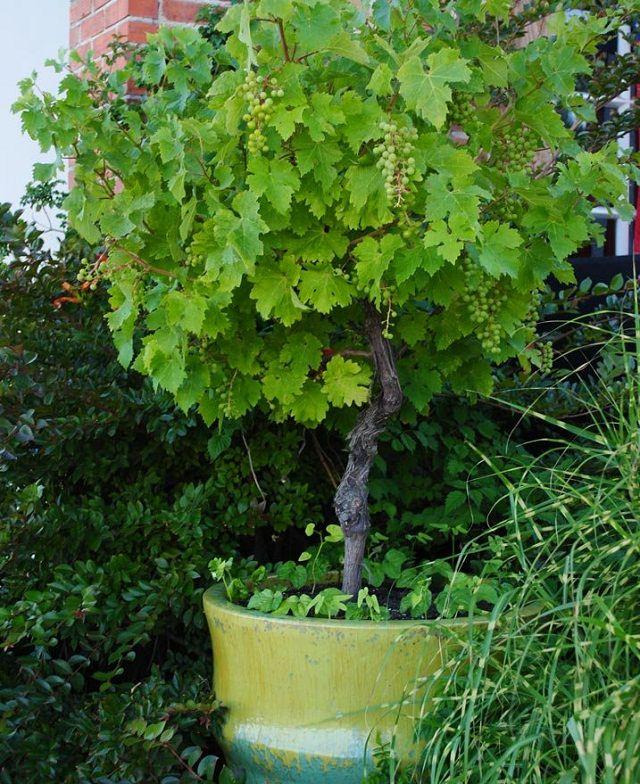
Diseases and Pests
In diseases, fungal diseases like black spot and powdery mildew, especially in dry and warm weather are possible. In pests, keep an eye on common garden insects like aphids. Japanese beetles, moths, caterpillars can also be a problem.
Harvesting
Harvesting should be done when your grape plant is at least 2-3 years old. Generally, grapes ripen anytime between late August to late October. Exactly when it depends on the variety and the type of climate you’re growing them in.
To find out whether your grapes are ready for harvesting or not is to taste them. If they taste sweet and nice, pick them. If they don’t, then leave them for a few more days. Once the grapes start to change their color they usually take anywhere between 1 to 3 weeks to become properly ripe (how long, depends on the variety and how good the climate is. For example, green grapes normally turn slightly translucent and their skins become yellow once they are ripe. Ripe grapes also feel soft to the touch. Eventually, taste is all that matters. If you like the taste, then pick them.
USDA Zones— 3 – 10
Difficulty— Moderate
Soil pH— Slightly acidic to neutral

Choosing a Pot
For growing grapes in containers, choose a large and sturdy container that can support this vigorous vine. A 15-20 gallon pot that is at least 16-18 inches deep and 18-24 inches wide is sufficient. Start with a smaller sized pot and then repot the plant in a larger one.
Choosing varieties
The best option is to go to a garden center and ask for a variety that can grow well in pots and in your climate. There are many varieties of grapevine you can choose from. Choosing a variety that is resistant to diseases and can grow well in your zone is most essential. However, you can grow almost any variety in the container but growing a dwarf grape cultivar like ‘pixie’ can save you from the hassle of training a grape vine in a pot.
Planting
The best time to plant grapevine is spring or early summer, planting on this time helps the plant to grow all season without the exposure to frost. But if you live in a frost-free hot tropical climate the best time for planting grape vine is winters.
Requirements for Growing Grapes in Pots

Position
Choose a location that is sunny, warm and dry. If your spot receives shade in an afternoon the plant will still do well, but at least 6 hours of sunlight is required. Avoid keeping the plant in wet, shady and less windy spot with less or no air circulation as it promotes fungal diseases and grapevine requires good air circulation around it.
Support and Training


Grapevine needs training and support to grow. When growing grapes in a pot, it is best to opt for a tall lightweight trellis, of wood or plastic. You can also DIY trellis for it. A grape vine grows long and requires support, it will be much better if you have an arbor or pergola like structure. Besides that, there are many other techniques to train the grape vine (See the picture above). Train the vine on a stake or something like a fan trellis. You can also support the vine on a stake with the help of “Umbrella Kniffen Training Method”. To learn more about this method, read this helpful article on pallensmith.com. Growing grapes in pots by the standard vine training method on a regular trellis is an easy and hassle free idea too.
Soil
Don’t use heavy garden soil when growing grapes in containers. Instead, use a light potting mix that is loose, rich in organic matter and most importantly drains well.
Watering
Water regularly and deeply to keep the soil slightly moist but avoid overwatering. Soggy, damp soil can be detrimental to the plant.
Fertilization
Side dress the plant periodically with aged manure or compost. In the first year, you can fertilize the plant with a general purpose fertilizer in spring and summer. From the next year, start to fertilize the plant with the fertilizer that is low in nitrogen but high in potassium and phosphorus from the spring when flower buds appear.
Growing Grapes in Tropics
Grapes are actually temperate fruits but the best thing about them is they can be grown in both temperate and tropical regions. Temperate climate zones without very harsh summers or humidity are optimum for growing grapevines. However, the two tropical countries India and Brazil are one of the largest producers of grapes in the world. Other tropical countries like Yemen, Thailand, Peru and Tanzania also produces grapes but to a smaller extent. This means if you live in a tropical climate you can still grow grapevine. You’ll only need to find a right variety that grows successfully in your area.
Still in tropics, areas with very high humidity or with heavy rainfall are less suitable for growing grapevine and if you’re living in an unfavorable climate like this, your plant will going to suffer from fungal diseases regularly and you’ll have to look after it more. Besides this, there is a possibility that fruits you’ll obtain will be of lesser quality and mild taste.
Grape Vine Care in Pots
Grape vine care in the pot is not so difficult if you follow the tips given below.

Pollination
When growing grapes in containers you must know most grape varieties are self-fertile and produce fruits on their own. However, shaking the plant gently at the time of flowering results in better yield.
Mulching
Grapevine requires mulching when grown on the ground. You can also mulch in the pot with pine bark, compost or with pebbles (this way it will look great too) to prevent excessive water evaporation from the soil and to protect roots from temperature fluctuations.
Overwintering
In climates with harsh winters, you have to protect the plant. For this, you’ll need to remove the dormant grapevine from its support and start to keep it indoors in warm space. Also, reduce watering and avoid the application of any fertilizer during this period.
Pruning
During the first few months after planting until the end of the growing season, do not prune the plant and allow it to grow freely to let the plant establish well in a pot and allow it to develop a strong root system.
Grapevine woods that are more than two years old do not produce fruits so you’ll have to remove all the old branches.
Prune the growth in late winter to early spring during the dormancy so that only two buds will remain. Buds are little protrusions on the trunk. This heavy pruning may seem too much to do but in the spring and summer, each of these buds will grow into a new branch. Dedicate the first year for training the vine to follow your trellis or stack with pruning and tying. Due to the limited space of the container, try to keep only 1 or 2 branches growing from the main trunk. Also, prune away any runners that creep away from the trellis.
The most important pruning will be one that you will perform in late winter when the plant shed its leaves, it is the one on which the fruiting depends. You will need to do the summer pruning too. Though it should have to be light and unobtrusive, just pinching and pruning.
To learn and read more pruning grapevines check out this article on freeplants.com and this one on RHS.
Growing grapevine as a tree is also possible. Check out this step by step article on eHow.

Diseases and Pests
In diseases, fungal diseases like black spot and powdery mildew, especially in dry and warm weather are possible. In pests, keep an eye on common garden insects like aphids. Japanese beetles, moths, caterpillars can also be a problem.
Harvesting
Harvesting should be done when your grape plant is at least 2-3 years old. Generally, grapes ripen anytime between late August to late October. Exactly when it depends on the variety and the type of climate you’re growing them in.
To find out whether your grapes are ready for harvesting or not is to taste them. If they taste sweet and nice, pick them. If they don’t, then leave them for a few more days. Once the grapes start to change their color they usually take anywhere between 1 to 3 weeks to become properly ripe (how long, depends on the variety and how good the climate is. For example, green grapes normally turn slightly translucent and their skins become yellow once they are ripe. Ripe grapes also feel soft to the touch. Eventually, taste is all that matters. If you like the taste, then pick them.
1
0
文章
笼岛 みどり
2017年05月22日


7月14日の誕生花
7月14日の誕生花は、「カワラナデシコ(河原撫子)」です。
ナデシコ科ナデシコ属の多年草で、原産地は日本です。5~10月頃にピンクや薄紫、赤、紫などの色の花を咲かせます。花びらの先には細かい刻みがあります。
カワラナデシコ(河原撫子)について科・属 ナデシコ科ナデシコ属英名 Fringed pink学名 Dianthus superbus var. longicalycinus原産地 日本,東アジア開花時期 5月~10月
カワラナデシコ(河原撫子)の花言葉と由来
カワラナデシコ(河原撫子)の花言葉は、「大胆」「貞節」「可憐」。
ナデシコの名前の由来は、撫でるように可愛い花の意味からきています。生息している場所が主に河原などであるため、「カワラナデシコ」と名付けられました。同属で中国原産の「カラナデシコ(唐撫子)」と区別するために「ヤマトナデシコ(大和撫子)」とも呼ばれます。また、花期が夏から秋にかけてというところから、「常夏」と呼ばれていたこともあったそうです。
「大胆」という花言葉は、鮮やかなピンクの花が河原の中でも目立つ花の姿からきています。「可憐」は、花びらに細かい刻みが多く、優しげで清らかな印象からつけられたと言われています。

秋の七草
ナデシコは、秋の七草のひとつにも数えられます。秋の七草は、万葉集に詠まれた「萩の花 尾花 葛花 撫子の花 女郎花 また藤袴 朝顔の花」がもとになっています。「朝顔の花」は、現在の朝顔ではなく桔梗のことだと言われています。これと同じく、「撫子の花」はカワラナデシコのことだと言われています。
春の七草のように粥にして食べるものではありませんが、古くから漢方や民間薬として利用されてきました。
漢方として使われるカワラナデシコ
カワラナデシコの漢方としての名前は「瞿麦(くばく)」といいます。「瞿麦」はカワラナデシコの全草を乾燥させたものを指します。生薬では開花中の地上部を乾燥させたものを使います。
古典園芸植物のひとつ
カワラナデシコは、古くから園芸植物として栽培されてきた「古典園芸植物」の一種です。江戸時代には品種改良されたものもでまわっていたようですが、最近ではあまり見られないようです。
カワラナデシコは万葉集に数多く詠まれたほか、枕草子や小林一茶などの俳句にも登場していることから、古くから親しまれていたことがわかります。


他の花言葉の記事はここから探してみよう。LOVEGREEN 花言葉記事一覧
0
0
文章
曹秋柳
2017年05月22日
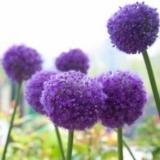
#大金鸡菊 为宿根草本,株高30~70cm,花黄金色。花期6~10月。瘦果具膜质翅,种子可保存3年。发芽率达95%。有大花重瓣、半重瓣等多种园艺品种。

大金鸡菊适应性强,不择土壤,但是在肥沃深厚的土壤中长势更佳。可于旱春将植株掘出,把大墩根芽分成数份,切割后,挖穴深25~30cm栽入,培土、踏实、浇透水即可。在7~8月间,要特别注意排水,防止倒状,并及时摘叶,剪掉枯枝和花梗,以减少不必要的养分消耗,促使植株开花。
大金鸡菊采用播种及分株繁殖。由于可以自播繁衍,播种繁殖大多在种子成熟之后,即在8月进行,也可以于4月露地直播,当年7~8月开花。分株繁殖于4~5月进行。

大金鸡菊适应性强,不择土壤,但是在肥沃深厚的土壤中长势更佳。可于旱春将植株掘出,把大墩根芽分成数份,切割后,挖穴深25~30cm栽入,培土、踏实、浇透水即可。在7~8月间,要特别注意排水,防止倒状,并及时摘叶,剪掉枯枝和花梗,以减少不必要的养分消耗,促使植株开花。
大金鸡菊采用播种及分株繁殖。由于可以自播繁衍,播种繁殖大多在种子成熟之后,即在8月进行,也可以于4月露地直播,当年7~8月开花。分株繁殖于4~5月进行。
0
0
文章
曹秋柳
2017年05月21日

金盏菊在幼苗3片真叶时移苗一次,待苗5~6片真叶时定植于10~12厘米盆。定植后7~10天,摘心促使分枝或用0.4%比久溶液喷洒叶面1~2次来控制植株高度。
金盏菊的生长期每半月施肥1次,或用“卉友”20-20-20通用肥。肥料充足,金盏菊开花多而大。相反,肥料不足,花朵明显变小退化。花期不留种,将凋谢花朵剪除,有利花枝萌发,多开花,延长观花期。留种要选择花大色艳、品种纯正的植株,应在晴天采种,防止脱落。
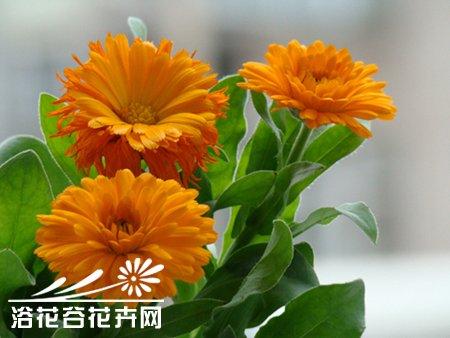
金盏菊的生长期间应保持土壤湿润,每15-30天施10倍水的腐熟尿液一次,施肥至2月底止。在金盏菊长至幼苗后期,叶片4-5个时,实行摘尖(即摘心)能够促使侧枝发育,增加开花数量,在第一茬花谢之后立即抹头,也能促发侧枝再度开花。
另外低温处理种子播种,将种子放入0℃冰箱中24小时,取出后即在露地播种,苗床要遮阴,八月中旬发芽,每周追施一次稀薄腐熟粪水,九月下旬也能开花。http://www.yuhuagu.com
金盏菊的开花期可以通过改变栽培措施加以调节,调节的措施主要有以下几种:
1、早春正常开花之后,及时检出残花梗,促使其重发新枝开花,加强水肥管理,到了9-10月可再次开花。
2、8月下旬秋播盆内,降霜后移至8-10℃温度下培养,白天放室外背风向阳处,严寒时放在室内向阳窗台上。一周左右浇一次水,保持盆土湿润,每月施加一次复合液肥,这样到了隆冬季节即能不断开花。
3、三月底或四月初直播于庭院,苗出齐后适当间苗或移植,给予合理的肥水条件,六月初即可开花。因金盏菊成化需要较长的低温阶段,故春播植株比秋播的生长弱,花朵小。
4、八月下旬露地秋播,苗期适时控制浇水,培育壮苗。入冬后移栽到防寒向阳地内越冬,气温降至0℃以下时,夜间加盖草帘防寒,白天除去草帘。当最低气温降至到零下7℃以下时,在草帘下加盖一层塑料薄膜。此时白天只打开草帘,不打开薄膜,但晴天中午前后宜适当通风。翌年早春最低气温回升到零下7℃以上时,及时除去薄膜,夜间盖上草帘即可。待最低气温升到0℃时应立即除去草帘。此时适当浇水保持土壤的湿润性,同时,每隔15天左右追加一次稀薄饼肥水,这样到了五一节,金盏菊便可鲜花怒放。
此外,现将金盏菊种子放在0℃冰箱内数日进行低温处理,然后于八月上旬播种于露地,九月下旬也能开花。
金盏菊的生长期每半月施肥1次,或用“卉友”20-20-20通用肥。肥料充足,金盏菊开花多而大。相反,肥料不足,花朵明显变小退化。花期不留种,将凋谢花朵剪除,有利花枝萌发,多开花,延长观花期。留种要选择花大色艳、品种纯正的植株,应在晴天采种,防止脱落。

金盏菊的生长期间应保持土壤湿润,每15-30天施10倍水的腐熟尿液一次,施肥至2月底止。在金盏菊长至幼苗后期,叶片4-5个时,实行摘尖(即摘心)能够促使侧枝发育,增加开花数量,在第一茬花谢之后立即抹头,也能促发侧枝再度开花。
另外低温处理种子播种,将种子放入0℃冰箱中24小时,取出后即在露地播种,苗床要遮阴,八月中旬发芽,每周追施一次稀薄腐熟粪水,九月下旬也能开花。http://www.yuhuagu.com
金盏菊的开花期可以通过改变栽培措施加以调节,调节的措施主要有以下几种:
1、早春正常开花之后,及时检出残花梗,促使其重发新枝开花,加强水肥管理,到了9-10月可再次开花。
2、8月下旬秋播盆内,降霜后移至8-10℃温度下培养,白天放室外背风向阳处,严寒时放在室内向阳窗台上。一周左右浇一次水,保持盆土湿润,每月施加一次复合液肥,这样到了隆冬季节即能不断开花。
3、三月底或四月初直播于庭院,苗出齐后适当间苗或移植,给予合理的肥水条件,六月初即可开花。因金盏菊成化需要较长的低温阶段,故春播植株比秋播的生长弱,花朵小。
4、八月下旬露地秋播,苗期适时控制浇水,培育壮苗。入冬后移栽到防寒向阳地内越冬,气温降至0℃以下时,夜间加盖草帘防寒,白天除去草帘。当最低气温降至到零下7℃以下时,在草帘下加盖一层塑料薄膜。此时白天只打开草帘,不打开薄膜,但晴天中午前后宜适当通风。翌年早春最低气温回升到零下7℃以上时,及时除去薄膜,夜间盖上草帘即可。待最低气温升到0℃时应立即除去草帘。此时适当浇水保持土壤的湿润性,同时,每隔15天左右追加一次稀薄饼肥水,这样到了五一节,金盏菊便可鲜花怒放。
此外,现将金盏菊种子放在0℃冰箱内数日进行低温处理,然后于八月上旬播种于露地,九月下旬也能开花。
0
1
文章
木木
2017年05月21日

#蟹爪兰 喜温暖的气候,良好的通风条件。它15℃时可缓慢生长,低于5℃会发生冻害,最忌温度突然降低及昼夜温差太大;开花期间如气温突然降至10℃以下,就会出现落花落蕾。
为防止蟹爪兰花期落蕾,并想延长其花期,一般10月下旬移入室内,放在阳光充足的地方,以防昼夜温差过大。冬季室温不要低于10℃,以20℃左右为宜。

蟹爪兰现蕾后,可每周追施充分腐熟的稀肥液-次。浇水不要太勤,以盆土见干后再浇水为宜。最好采取勤喷水的方法,这样既可增加土壤水分,又可适应蟹爪兰喜湿润的特点。
为防止蟹爪兰花期落蕾,并想延长其花期,一般10月下旬移入室内,放在阳光充足的地方,以防昼夜温差过大。冬季室温不要低于10℃,以20℃左右为宜。

蟹爪兰现蕾后,可每周追施充分腐熟的稀肥液-次。浇水不要太勤,以盆土见干后再浇水为宜。最好采取勤喷水的方法,这样既可增加土壤水分,又可适应蟹爪兰喜湿润的特点。
0
0
文章
stone
2017年05月21日
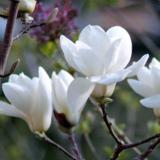
#百合科立金花 属球根花卉立金花花期一般在每年的春天开花,花期约40—60天,为早春的应时花卉,花谢后,应控制水分,使其顺利度过休眠期。立金花每年8一10月种植,冬季进行花芽分化,翌年早春开花。喜温暖气候,不耐寒,生长适温15—18℃,要求排水良好的肥沃土壤。
立金花地下具有皮球茎,皮为淡黄色,球茎白色,直径约2cm,高1.5cm左右,扁圆形。叶披针形。花冠长筒形钟状,花有浓黄、橙黄、青紫等色,或红、黄、淡绿三复色。花朵美观艳丽。带状绿色叶片上具有红褐色的斑点,亦具较高的观赏价值。
立金花适于盆栽,盆土宜用富含腐殖质的砂壤土,种植深度约2cm。植后宜置于通风良好的阴凉处,约10天即可萌芽。幼芽出土后应移至阳光充足处,要保持土壤湿润,并略施薄肥。株高5一10cm后,每15天左右施液肥一次。
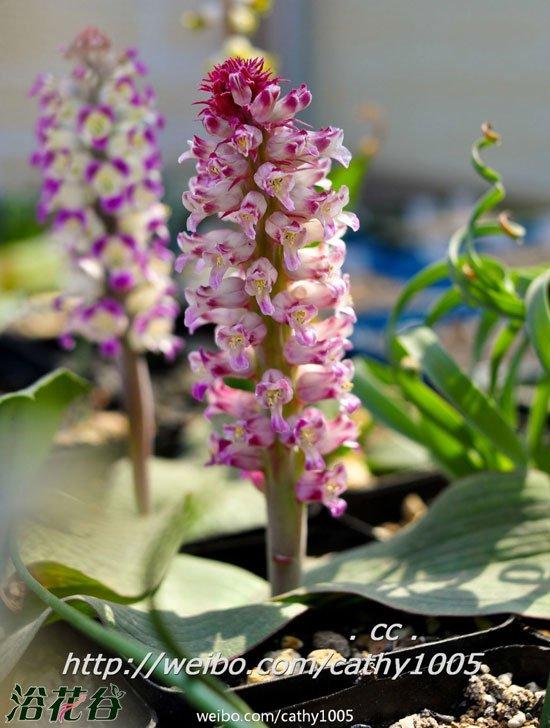
立金花地下具有皮球茎,皮为淡黄色,球茎白色,直径约2cm,高1.5cm左右,扁圆形。叶披针形。花冠长筒形钟状,花有浓黄、橙黄、青紫等色,或红、黄、淡绿三复色。花朵美观艳丽。带状绿色叶片上具有红褐色的斑点,亦具较高的观赏价值。
立金花适于盆栽,盆土宜用富含腐殖质的砂壤土,种植深度约2cm。植后宜置于通风良好的阴凉处,约10天即可萌芽。幼芽出土后应移至阳光充足处,要保持土壤湿润,并略施薄肥。株高5一10cm后,每15天左右施液肥一次。

0
0
文章
stone
2017年05月21日

一、收到种球后,先在18℃左右、通风阴凉的环境下放置2天,使在运输过程中可能造成的伤口愈合后再种植,若要长期贮存,则必须存放在7℃至10℃(湿度80%)的冷藏库中。
二、从种植到开花及盛花期,因品种而有所不同,且日照长及高温会促使提早开花。一般而言,大球较小球开花早。
三、种植的时候种球芽朝上,上面覆土约2.5厘米至3厘米。球径12厘米至14厘米的可以用4寸至4.5寸盆,球径16厘米至18厘米的用5寸至5.5寸盆。盆子太小或种得浅,生长势容易衰弱。
四、种植的介质要求排水良好、通气佳、pH值在6至6.5,栽培土中泥炭土含量在30%至50%,其他则可用大颗粒的介质,以利通气,如沙、树皮、珍珠岩、蛭石等。

二、从种植到开花及盛花期,因品种而有所不同,且日照长及高温会促使提早开花。一般而言,大球较小球开花早。
三、种植的时候种球芽朝上,上面覆土约2.5厘米至3厘米。球径12厘米至14厘米的可以用4寸至4.5寸盆,球径16厘米至18厘米的用5寸至5.5寸盆。盆子太小或种得浅,生长势容易衰弱。
四、种植的介质要求排水良好、通气佳、pH值在6至6.5,栽培土中泥炭土含量在30%至50%,其他则可用大颗粒的介质,以利通气,如沙、树皮、珍珠岩、蛭石等。

0
0
文章
Rainbow
2017年05月21日

#铃兰 又名君影草、草玉铃。株高20~25厘米。地下具横生的根状茎,茎端有肥大的地下芽。叶基生而直立。总状花序侧向一侧,着花6~10朵,花冠钟状下垂,纯白色,有浓香,花期4~5月。
常见栽培的品种有大花铃兰、粉花铃兰、重瓣铃兰、花叶铃兰等。铃兰植株低矮,又较耐阴,是适合林下和林缘疏阴下栽植的优良地被植物,也可盆栽或作切花。

铃兰通常以分割根状茎及根茎端的小鳞茎进行繁殖,春秋均可,但以秋季分栽生长开花为好。单芽或2~3芽一丛栽植,覆土厚1~2厘米,翌年4月中下旬即可开花。
露地栽培要选湿润及半阴环境,要求土质疏松、肥沃及排水良好的土壤。栽种前施足基肥,栽后浇透水,冬季盖草防寒。早春新芽萌发后撒去覆盖物,并进行松土。
生长期间根据天气情况和土壤墒情补充水分,每隔10~15天施一次稀薄饼肥水或复合液肥,每次浇水施肥后要及时中耕除草。花梗抽生后应停止施肥,以免引起落蕾落花。花谓十后要及时剪去残花梗,使养分集中供应根茎。花谢后和8月底应再各施一次上述液肥,促使根茎生长充实,以利于花芽分化和休眠芽生长。
铃兰也常作促成栽培,通过调节温度等措施来实现提前或推迟开花。具体方法是:秋末选择已形成花芽的健壮株丛,割取根茎(带2~3个芽),置于2~3℃的室内,经2~3周处理后即可进行促成栽培。
为了提早开花,可于所需开花时间前5周移入室内,适当浇水并置黑暗处,保持12~14℃,经10~15天后移至阳光下养护,室温提高到20~22℃,此时,每天浇水1~2次,每隔10天追施一次稀薄复合液肥,经过如此养护约3—4周便可开花。待花朵刚开时将室温降至12~15℃,,可延长花期。
常见栽培的品种有大花铃兰、粉花铃兰、重瓣铃兰、花叶铃兰等。铃兰植株低矮,又较耐阴,是适合林下和林缘疏阴下栽植的优良地被植物,也可盆栽或作切花。

铃兰通常以分割根状茎及根茎端的小鳞茎进行繁殖,春秋均可,但以秋季分栽生长开花为好。单芽或2~3芽一丛栽植,覆土厚1~2厘米,翌年4月中下旬即可开花。
露地栽培要选湿润及半阴环境,要求土质疏松、肥沃及排水良好的土壤。栽种前施足基肥,栽后浇透水,冬季盖草防寒。早春新芽萌发后撒去覆盖物,并进行松土。
生长期间根据天气情况和土壤墒情补充水分,每隔10~15天施一次稀薄饼肥水或复合液肥,每次浇水施肥后要及时中耕除草。花梗抽生后应停止施肥,以免引起落蕾落花。花谓十后要及时剪去残花梗,使养分集中供应根茎。花谢后和8月底应再各施一次上述液肥,促使根茎生长充实,以利于花芽分化和休眠芽生长。
铃兰也常作促成栽培,通过调节温度等措施来实现提前或推迟开花。具体方法是:秋末选择已形成花芽的健壮株丛,割取根茎(带2~3个芽),置于2~3℃的室内,经2~3周处理后即可进行促成栽培。
为了提早开花,可于所需开花时间前5周移入室内,适当浇水并置黑暗处,保持12~14℃,经10~15天后移至阳光下养护,室温提高到20~22℃,此时,每天浇水1~2次,每隔10天追施一次稀薄复合液肥,经过如此养护约3—4周便可开花。待花朵刚开时将室温降至12~15℃,,可延长花期。
0
0
文章
Rainbow
2017年05月21日

#圆叶椒草 (Peperomia obtusifolia),原产委内瑞拉。节间较短,节间处也极易生根。喜温暖、湿润和半阴的环境,稍耐干旱和半阴,生长适宜的温度为20~30度,不耐寒,忌阴湿,10度以下会停止生长,5度以下会受冻害。
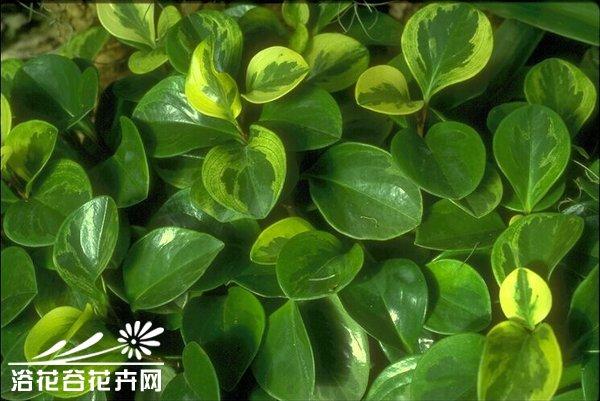
圆叶椒草有较强的耐阴能力,太强的阳光直射对植株的生长很不利。对空气湿度要求不高,能忍受居室干燥的环境。对空气湿度要求不是很高,能在干燥的居室内正常生长,经常用与室温相近的水向植株喷洒,可使植株生长繁茂,叶色油绿光亮,更具生机。
圆叶椒草生长适温20 ℃至30℃,在此条件下保持盆土湿润而不积水,注意浇水宁少勿多,以免因土壤积水引起根部腐烂。春、夏、秋三季要适当遮光,太强的光线对植株生长不利,有时强烈的直摄阳光还会灼伤叶片,而光线过弱,又会使叶片颜色变淡,失去那种碧绿光亮的色彩。
圆叶椒草生长期每2周至3周施一次腐熟的稀薄液肥或观叶植物专用肥。冬季要尽量多接受阳光的照射,停止施肥,严格控制浇水,维持10℃以上的室温。
圆叶椒草栽培中每1年至2年的春季换盆一次,盆土要求疏松透气,含有丰富的腐殖质,排水性良好。可用腐叶土或泥炭土、腐熟的马粪或牛粪加少量的珍珠岩或粗沙、蛭石混匀后配制,并用大而浅的花盆栽种,以利排水。

圆叶椒草有较强的耐阴能力,太强的阳光直射对植株的生长很不利。对空气湿度要求不高,能忍受居室干燥的环境。对空气湿度要求不是很高,能在干燥的居室内正常生长,经常用与室温相近的水向植株喷洒,可使植株生长繁茂,叶色油绿光亮,更具生机。
圆叶椒草生长适温20 ℃至30℃,在此条件下保持盆土湿润而不积水,注意浇水宁少勿多,以免因土壤积水引起根部腐烂。春、夏、秋三季要适当遮光,太强的光线对植株生长不利,有时强烈的直摄阳光还会灼伤叶片,而光线过弱,又会使叶片颜色变淡,失去那种碧绿光亮的色彩。
圆叶椒草生长期每2周至3周施一次腐熟的稀薄液肥或观叶植物专用肥。冬季要尽量多接受阳光的照射,停止施肥,严格控制浇水,维持10℃以上的室温。
圆叶椒草栽培中每1年至2年的春季换盆一次,盆土要求疏松透气,含有丰富的腐殖质,排水性良好。可用腐叶土或泥炭土、腐熟的马粪或牛粪加少量的珍珠岩或粗沙、蛭石混匀后配制,并用大而浅的花盆栽种,以利排水。
0
2
文章
绮丽
2017年05月21日


文竹和武竹的区别~植株特征
#文竹 植株特征
文竹的植株高度可以达到几米;
其茎干根部呈肉质生长,茎柔软丛生,很细长,而且多分枝;
文竹的叶子:叶状枝都会以每10~13枚成簇生长,呈刚毛状,略具三棱形;
其花每4朵腋生于枝条上面,花开是白色,有短梗生长,它的花期在9~10月之间,花期很短。

文竹的浆果在成熟时是紫黑色的,有1~3颗种子。
武竹的植株特征
武竹的植株上的茎和分枝都有纵稜分布,其茎干细长平滑无毛覆盖生长。
武竹的叶子:其叶状枝每3枚就能成簇,形状扁平或者是条形的,叶子的先端呈现锐尖头;
武竹的花:其花为总状花序,花朵单生或着是成对生长在枝条的顶端,一课武竹就可以开花十几朵;

其花朵为白色,花被片是矩圆状卵形的,雄蕊上面有很短的花药分布生长;
其浆果成熟时是红色的,有1-2颗种子。
文竹和武竹的区别~生长习性
文竹生长习性
文竹喜好温暖湿润和半阴通风的生长环境,不耐寒,不耐干旱,浇水不可以太多,夏季害怕阳光直射,需要适当遮阴;
其原生长于山野之间,多被人们用来栽培于庭园供观赏。

武竹生长习性
武竹喜好温暖湿润的生长环境,怕强光低温,这种情况下会停止生长,耐干旱和瘠薄的土地,不耐寒;
文竹多被人们用来布置会场,切叶配置花篮、花圈等。

0
2
文章
绮丽
2017年05月21日

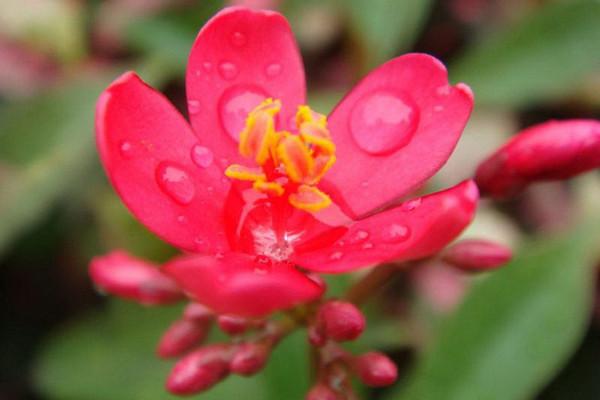
#珊瑚花 的养殖方法
光照温度
珊瑚花喜好光照,在炎热的酷暑注意遮阴,不要让阳光直射,在平时要注意给足光照。
温度方面,不同地区温度不同,所以要求也不同,北方一般于10月上中旬就可以搬移室内养护,在室内要放在阳光充足的地方,在越冬期间室温则需要保持在12℃左右以上。
浇水施肥
在珊瑚花生长期间不要频繁浇水,水分过多容易造成脱叶和烂根现象。但是要注意向叶面还有盆土周围喷洒水分,保持叶面还有环境的,湿度。
要经常施稀薄饼肥水,大概每隔10天施一次;到了冬季时候记住要停止施肥。
修剪
珊瑚花在幼苗上盆以后,等生长到约15厘米左右的高度时要进行摘心,以促进分枝,促进开花。成株结合换盆后,以后每年早春要修剪一次,促使植株生长发育均衡,保证植株的优美。
病虫害的防治
珊瑚花在温度高的环境下容易发生叶斑病,这时就要及时防治。
可以用65%代森锌可湿性粉剂600倍液喷洒。
珊瑚花常见的虫害有刺蛾、叶蝉和蚜虫危害,可以用10%除虫精乳油2000倍液进行喷杀。
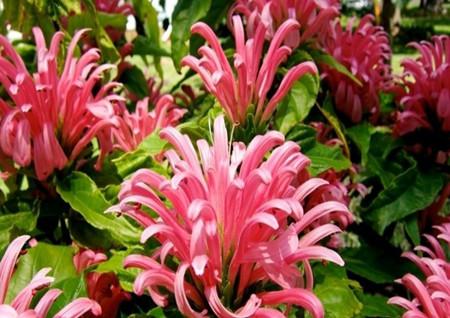
珊瑚花的养殖注意事项
注意养殖珊瑚花的环境
珊瑚花养殖要求全日照或半日照的光照环境,土壤要求疏松且肥沃的微酸性土壤即可。
注意浇水
珊瑚花喜好湿润的环境,所以要保持土壤的湿度,但不要积水。
这是最主要的,注意事项,其他方面只要正常即可。

0
0
文章
绮丽
2017年05月21日

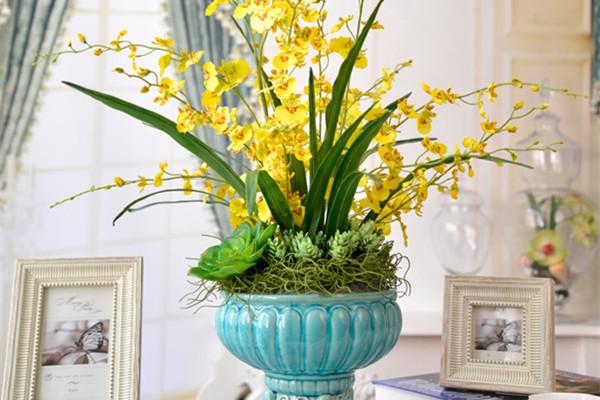
#文心兰 花期
文心兰的花期一般在每年的10中旬开花,其花期比较短,花开素丽优美,花的品种也多,极具观赏性;
不过因为种类杂,生长地区不一,所以花期不一样,没有固定的花期。
文心兰是世界上一种重要的盆栽花卉的原料。

文心兰花的特征
首先是在一个假鳞茎上就只有1个花茎,不过那些生长粗壮的假鳞茎可能也会有2个花茎;
文心兰的花朵色彩鲜艳明丽,形状像是飞翔的金蝶一样,又似翩翩起舞的少女,亭亭玉立,所以也叫金蝶兰或舞女兰;
大部分种类的文心兰的花茎上面只有2朵花,而有些会达到十几朵之多;
文心兰的花多以黄色为主,另外还有常见的是绿色、白色、红色和洋红色等颜色,真是可谓乱花渐欲迷人眼;
文心兰花的大小也不一,有的花朵很小,而有的花朵很大,形态各异;
花的构造很特殊:
花萼的萼片大小均等,花瓣与背萼是一样大小的;
花有三裂的唇瓣,大小不一,是提琴状的,形态及其优美,在中裂片上面的基部有一脊状凸起物,脊上又凸起的小斑点,看起来真的很奇特。

文心兰花的象征意义
文心兰的花语和象征代表意义:吉祥如意,快乐无忧、忘却烦忧;
据说是来自一个传说,就是宋庆龄仿白宫的时候一眼就看到这种花,其花的形状像是中国的“吉”子,所以后来就用来象征吉祥如意。

0
0



